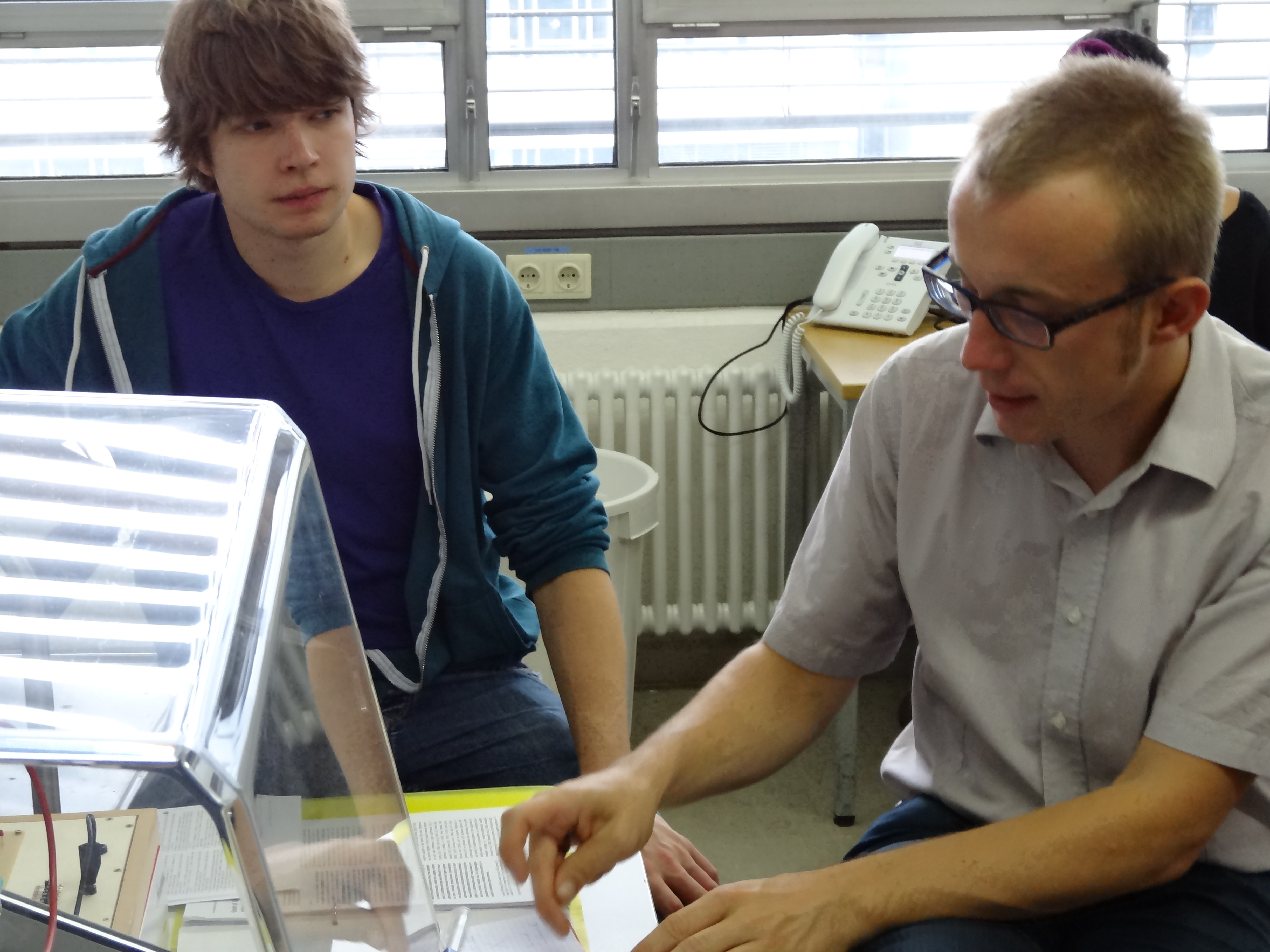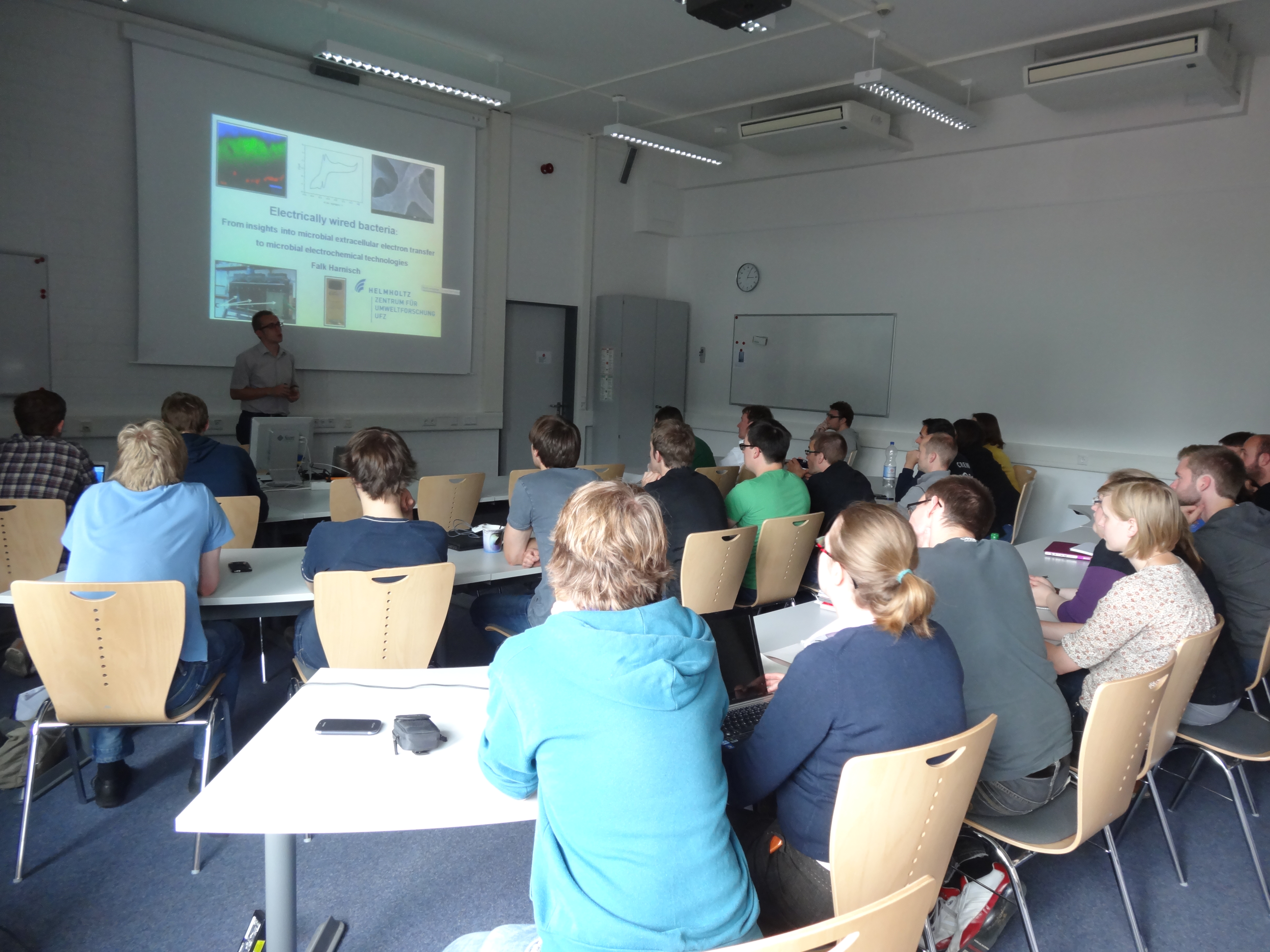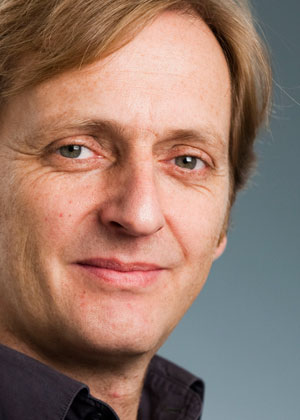Team:Bielefeld-Germany/Human Practice/Experts
From 2013.igem.org
| Line 160: | Line 160: | ||
Mentioning the biosafety aspect is not only a useful, but even a necessary part of the active presentation of the Bielefeld’s iGEM project to the public. The realization of the Day of Synthetic Biology (Synbioday) in order to establish public awareness seems to be very welcome for the field of research in Synthetic Biology. If possible similar activities should be intensified. Especially the biosafety aspect should be one of the major topics for public discussions to show the advantages of such systems and to reduce the distrust. From my own experience I know how hard it is to clearly and appropriately communicate the different aspects of research and technology in the early stages. | Mentioning the biosafety aspect is not only a useful, but even a necessary part of the active presentation of the Bielefeld’s iGEM project to the public. The realization of the Day of Synthetic Biology (Synbioday) in order to establish public awareness seems to be very welcome for the field of research in Synthetic Biology. If possible similar activities should be intensified. Especially the biosafety aspect should be one of the major topics for public discussions to show the advantages of such systems and to reduce the distrust. From my own experience I know how hard it is to clearly and appropriately communicate the different aspects of research and technology in the early stages. | ||
<br> | <br> | ||
| - | From the perspective of the policy-advisory Technology Assessment, it is currently a very interesting question if iGEM research activities and public relations may cause, by the commitment of the participating students, an increased interest for biological work and DIY biology, particularly in the non-scientific community. The iGEM-teams inspirit science and they are predestined to motivate people for an active participation in life science.” | + | From the perspective of the policy-advisory Technology Assessment, it is currently a very interesting question if iGEM research activities and public relations may cause, by the commitment of the participating students, an increased interest for biological work and DIY biology, particularly in the non-scientific community. The iGEM-teams inspirit science and they are predestined to motivate people for an active participation in life science.”(citation of Dr. Arnold Sauter) |
</p> | </p> | ||
Revision as of 15:53, 26 October 2013
Experts
Dr. Falk Harnisch
Introduction
At the congress Biotechnologie2020+ in Berlin, Germany we met
[http://www.ufz.de/index.php?de=31006 Dr. Falk Harnisch], an expert in bioelectrocatalysis and bioelectrotechnology who works at the department of environmental microbiology at the [http://www.ufz.de/index.php?en=11382 Helmholtz-Zentrum for environmental research] in Leipzig, Germany. He is the supervisor of the research group for microbial biocatalysis and bioelectrotechnology.
On October 8th we interviewed him via Skype. After a short discussion about our Microbial Fuel Cell (MFC) at the beginning, where we figured out that the most difficult part of the MFC is the transfer of the electrons trough the cell membrane and the oxidation of the mediator at the anode as well and the toxicity of some mediators. After this short introduction we asked him specific questions about our project:
Skype-Interview
How do you assess the chances of expressing a conductive pilus in E. coli? What are the difficulties?
In the short time you have to work at your project it is very difficult to express a conductive pilus in E. coli. Especially, since the structural proteins have not yet been clearly analyzed which genes are responsible for the pilus and his conductivity so it isn’t easy to work with it. If you reach your goal it would be a great scientific success. It is very interesting to express this pilus of G. sulfurreducens in E. coli because it has got the highest electron-transfer-constant so it would be very effective.
Do you think that cloning of the pilus from Geobacter sulfurreducens into E. coli causes safety issues?
It is commonly known that pili of E. coli cause human disease. The strain which you are working with is a safety strain without these dangerous pili. In my opinion there doesn’t exist the problem of changing the E. coli S1 strain into a S2 strain because of the fact that this pilus of G. sulfurreducens isn’t associated with diseases rather it is for transferring electrons.
We want to use the mtrCAB cluster from Shewanella oneidensis to increase the electron transfer through the bacteria membrane to the anode. What do you think about this idea?
Generally it is a good one. The advantage of the mtrCAB cluster from S. oneidensis is better related to E. coli then the cluster from Geobacter sulfurreducens, but the negative aspect of this idea is that the mtrCAB cluster only has a low electron transfer constant. This means that in comparison to the transfer via mediators or direct transfer via pili the electrons need more time to get through this tunnel-like protein. It could be problematic to get the proteins in correct orientation in the membrane. This problem can be solved by anaerobe coexpression of the ccm-cluster. The idea is challenging but practicable.
Another aspect of our project is to express porines where our mediators can go through. What do you think about this?
This is also an interesting approach. I am very interested if this will work, because it could be a great challenge to improve the reduction of the mediator in the bacteria. But it is very important to pay attention that the potential of the membrane is not too low. This is the most important aspect that you have to look at.
We are also developing a MFC for our engineered E. coli. Does there exist any important rules we have to follow for example the size of the MFC?
You have to minimize all the distance between the different parts in your MFC. Every distance is a resistor and decrease your demand. The optimal size of your MFC depends on the application you want to choose. For testing the principal of your system is the actual size of your MFC good. If you want to get it smaller other problems will appear which you would have to solve. When you want to integrate your system you have to conform it correspondingly.
We have got a special biosafety system including the D-alanine auxotrophe E. coli and the Colicin E2 (at this time we thought that we might use this part from the partsregistry instead of Rnase Ba). Do you think that system is a good one?
The system what you want to use is a good one. In my opinion it is save and I don’t think that this will be a problem to use it. There exist another good biosafety idea but for Geobacter sulfurreducens. If you would work with this bacteria you could use the aspect that this organism use only one electron acceptor when it is under anaerobe conditions. When this organism gets out of the MFC it will die because there wouldn’t be the one electron acceptor which is needed. But as E. coli is facultative aerobe this system won’t work here, because E. coli has several possibilities to oxidize the substrate.
How do you asses the chance of the MFC in general to take a role in bioremediation and producing energy in the future?
It is a very interesting new idea with a high potential for producing compounds/energy or degradation harmful substances. Many scientists of different fields of knowledge research together. There is much research necessary but in the future it will take a part in different fields. For remediation it would be the best to use mixed culture, while Bacteria as E. coli have the most potential to combine synthesis and energy production. Another challenging aspect would also be to introduce biosynthesis specific with electrons. As you see there is a lot of interesting work to be done and I hope that your project can help to develop the MFC a liitle bit further.
CeBiTec-Kolloquium
On September 9th we invited Dr. Falk Harnisch to our institution for giving him an impression of how our work goes ahead. All in all he was very satisfied with our ideas after presenting him our state of research. Furthermore we engagingly discussed our MFC-design and how we can optimize it. He observed that our carbon electrodes are well chosen and that potassium ferrocyanide (III) in the cathode chamber is a suitable redox system. We discussed that on both sides of the MFC the pH has to be 7. For example 50mM phosphate buffer can be used to avoid liquid diffusion and potential gradients through the membrane. We debatted that glycerin is more suitable carbon source than glucose and that it is also a great advantage to use as it is a waste material of biodiesel production. In further discussions, it was possible to develop a protocol for the next experiments. With this we are able to measure how well E. coli can metabolize the different carbon sources, like glycerin, acetate, lactate or glucose, under anaerobe conditions. After this screening method without using mediators we will screen these carbon sources of choice with added soluble and insoluble electron acceptors like fumerate for analyzing the growth rate of E. coli with supplemented mediators.
A low growth rate with an insoluble electron acceptor indicates a not usable mediator, whereas high growth rate shows good extracellular electron transfer by the mediator. Dr. Falk Harnisch gave the hint to test these different screenings primarily outside of the MFC. After a good combination of carbon source and mediator the optimal system could be transferred to the MFC.
Dr. Arnold Sauter
Introduction
To get an expert view on Microbial Fuel Cells concerning technology assessment, biosafety and the embedment in the current discussions about synthetic biology we asked [http://www.itas.kit.edu/english/tab_staff_sauter_arnold.php Dr. Arnold Sauter] for his opinion. He is from the [http://www.tab-beim-bundestag.de/en/index.html Office of Technology Assessment at the German Bundestag (TAB)] and the deputy head of the TAB which investigates research on synthetic biology. He has got a long-standing experience in technology assessment for methods and applications of genetic engineering.
The TAB is an independent scientific institution created with the objective of advising the German Bundestag and its committees on matters relating to research and technology.
Since 1990 the TAB has been operated by the Institute for Technology Assessment and Systems Analysis (ITAS) of the Karlsruhe Institute for Technology (KIT), based on a contract with the German Bundestag. TAB´s steering body is the Committee on Education, Research and Technology Assessment.
TAB is both a member of the European Parliamentary Technology Assessment (EPTA) Network and the German language network NTA (Netzwerk TA) (NTA)
Expert classification of our project
"Early consideration of biosafety aspects in the development of genetically engineered organisms, especially for all-day applications, is of fundamental importance, even if the technical or economic success cannot be assessed at such an early stage. A combination of physical and biological containment as it is provided for the Microbial Fuel Cell of the iGEM-Team Bielefeld, promises, at least for a batch process, a sufficient safeguard against environmental and health risks. A continuous process, which could be engineered and implemented for example in a waste water treatment, would certainly raise even more fundamental challenges.
Mentioning the biosafety aspect is not only a useful, but even a necessary part of the active presentation of the Bielefeld’s iGEM project to the public. The realization of the Day of Synthetic Biology (Synbioday) in order to establish public awareness seems to be very welcome for the field of research in Synthetic Biology. If possible similar activities should be intensified. Especially the biosafety aspect should be one of the major topics for public discussions to show the advantages of such systems and to reduce the distrust. From my own experience I know how hard it is to clearly and appropriately communicate the different aspects of research and technology in the early stages.
From the perspective of the policy-advisory Technology Assessment, it is currently a very interesting question if iGEM research activities and public relations may cause, by the commitment of the participating students, an increased interest for biological work and DIY biology, particularly in the non-scientific community. The iGEM-teams inspirit science and they are predestined to motivate people for an active participation in life science.”(citation of Dr. Arnold Sauter)
 "
"






